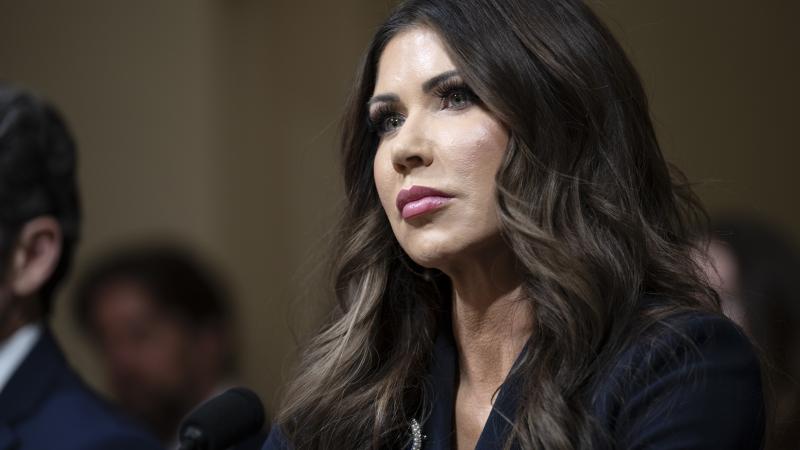Backlash nixing SEC creating ‘natural asset companies’ succeeded, but some warn concept is not dead
The Bureau of Land Management is currently proposing a rule that would create a new type of lease for non-use of public lands. Critics of a related rule proposed by the SEC argue that the rules were designed to work in conjunction with one another.
Opponents of a proposed Security and Exchange Commission rule that would have created a new kind of Environmental, Social and Governance investment are celebrating the New York Stock Exchange's (NYSE) decision to withdraw the proposal.
“This is a clear win for farmers, ranchers, loggers, miners, energy producers, energy users, and all who enjoy the use of public lands. It is also a clear sign that when the insidious policies being considered by this administration are exposed, they can be defeated,” Rep. Harriet Hageman, R-Wyo., said in a statement.
However, some of those who fought the proposed rule warn that it’s not likely the last attempt to create a legal structure to allow the concept to advance. The Bureau of Land Management is currently revising a proposed rule that would create a new type of lease for non-use of public lands, and some critics of the SEC proposed rule argue that the rules were designed to work in conjunction with one another.
The BLM proposal has not been withdrawn and according to their website, "The BLM is making changes, as appropriate, to the proposed rule based on [public] comments and additional internal review."
Undeveloped assets
The original SEC proposed rule, which was published on Oct. 4, 2023, would have created Natural Asset Companies (NAC). These would “actively manage, maintain, restore (as applicable), and grow the value of natural assets and their production of ecosystem services.”
These NACs would be “prohibited from directly or indirectly conducting unsustainable activities, such as mining, that lead to the degradation of the ecosystems it is trying to protect.”
The NACs would, according to the published proposal, “monetize ecosystem services that have markets,” which means selling carbon credits. These are permits that allow the owners to emit a certain amount of greenhouse gasses. A company that emits less than its allotment can sell the extra credits to a company that needs more allowance.
The Financial Fairness Alliance, an SEC watchdog, was among the first to raise concerns about the proposal. According to comments the alliance submitted to the SEC on the proposed rule, the drafters recognized there’s a challenge to provide investors with sufficient information to allow them to make an informed decision with response to how undeveloped assets can contain any value.
Since there’ are no specific accounting standards recognized under the Generally Accepted Accounting Principles (GAAP) or anything else under U.S. law that would allow for these investments, the alliance’s comments explained, a NAC would follow a reporting framework created by Intrinsic Exchange Group Inc. This is the same entity that created the NAC concept and entered into a commercial partnership with the NYSE to profit from the concept.
The Financial Fairness Alliance explained in its comments that the untested accounting for NACs are a vehicle for fraud. “A business that claims to be for-profit when it is clearly a social welfare non-profit company is a deception to the investing public,” the alliance said. Among other problems with the proposal, the group also pointed out that foreign entities with interests hostile to the U.S. could lock up the nation’s resources in NACs.
Justin Bis, director of the alliance, told Just The News that the proposal was “dangerous,” and the alliance was surprised by the NYSE’s decision to abruptly drop the proposal. “We educated people, published op-eds, and submitted extensive public comments to the SEC, which two dozen state attorneys generals cited in their letter to the agency. The proposal was eventually dropped, which was a huge shock, but really shows you that when the public is well informed and involved, we get better decisions out of Washington,” Bis said.
Bis said, as much as the withdrawal of the SEC rule was promising, he expects that the interests pushing for these ideas will pursue them through another avenue in the future. What that avenue will be, he said, is uncertain.
“That's the million-dollar question right there. While they lost this battle, the people who pushed this proposal have already signaled they are not giving up. I think we're going to see some related proposals come out very soon. It seems like there's a lot of activity happening,” Bis said.
Conservation Leases
The coalition of state attorneys general, led by Sean Reyes of Utah and Kris Kobach of Kansas, argued in their letter that the NACs were intended to serve as a funding mechanism of the Bureau of Land Management’s “conservation leases.”
Instead of permitting a project aimed at developing a profitable resource like with oil and gas leases, the BLM proposal creates a category of leases that would allow public land to be leased for “restoration or protection purposes.”
“For example, a non-profit organization or conservation district could put people to work restoring wildlife habitat and, through a conservation lease, be assured the work could take hold and flourish,” the BLM explains in a fact sheet.
The attorney general’s letter explains that once a parcel is given a conservation lease, all productive economic uses such as grazing, logging or mining. will no longer be allowed unless they are consistent with the lease’s environmental purpose.
William Perry Pendley, who headed the BLM under former President Donald Trump, told Just The News that federal laws granted agencies like the BLM and U.S. Forest Service the authority to manage public lands in accordance with “multiple uses, sustained yield."
“In other words, Bureau of Land Management lands are a working landscape,” Pendley explained.
Some lands are set aside with National Monument and other designations by congressional action or presidential decree, but all other public lands are for multiple uses, including resource development. “Maybe I'm alone on this, but I really chafe at the use of the word ‘conservation,’ because ‘conservation’ goes back to Teddy Roosevelt’s time. And it means used. It doesn't mean preservation,” Pendley said. “There's a huge difference between preservation and conservation. And when this current bunch of yahoos talks about conservation, what they really mean is preservation.”
Pendley said, as did the attorney generals in their letter, that the BLM proposal, if finalized, would grant the agency an authority that is not provided to it by federal law.
The purpose of the NACs, the attorney generals argued, is to create entities and organizations that would sink money into unprofitable leases, and the now-withdrawn SEC rule would have created a framework for the accounting of “ecosystem services” over actual financial metrics.
In an op-ed in RealClear Policy Thursday discussing the NYSE decision to withdraw the proposal, Utah Treasurer Marlo Oaks, who was an outspoken critic of the proposed rule, expressed some uncertainty this is the end of the line for the concept.
“The NYSE decision only yesterday to withdraw the NAC proposal, a day before the comment period ended, is a welcome step. I hope this represents a true change of heart, and not a cynical maneuver to regroup for a later attempt to advance this dangerous idea,” Oaks wrote.
The Facts Inside Our Reporter's Notebook
Links
- Security and Exchange Commission rule
- withdraw the proposal
- said in a statement
- The Bureau of Land Management
- which was published on Oct. 4, 2023
- permits that allow the owners to emit a certain amount of greenhouse gasses
- Financial Fairness Alliance
- comments the alliance submitted to the SEC
- cited in their letter
- argued in their letter
- BLM proposal creates a category of leases
- the BLM explains in a fact sheet
- op-ed in RealClear Policy
















